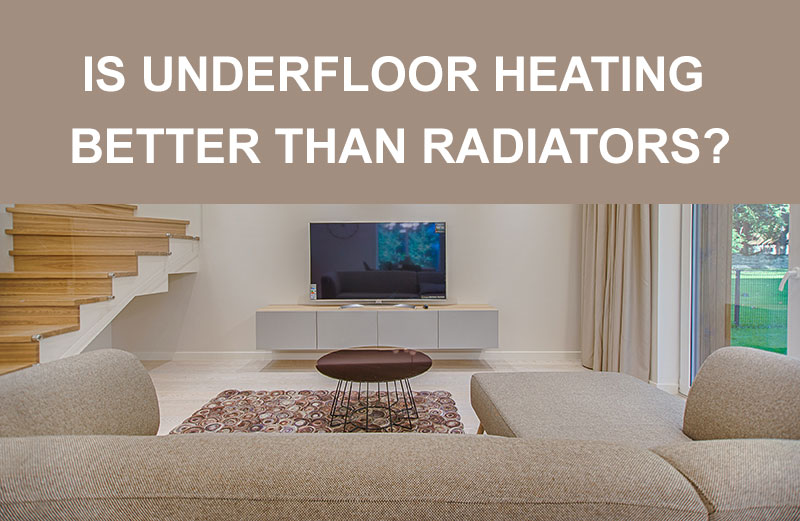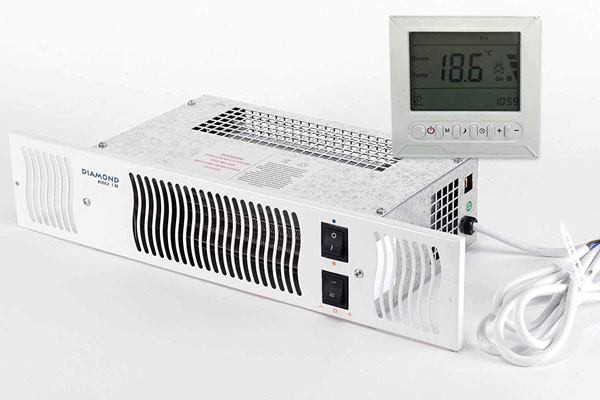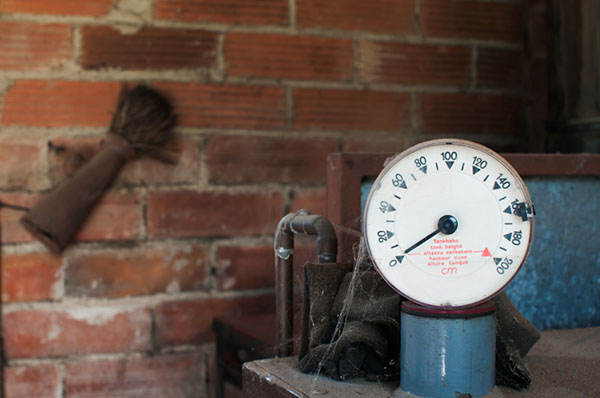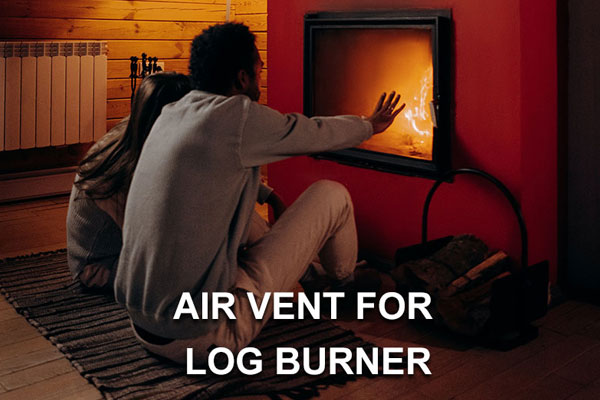Hot water-fed radiators have been a heating staple for homes for many years. However, underfloor heating has become more prevalent because of its versatility and space-saving advantages.
For anyone building their own home, adding an extension or performing major renovations, the question of installing traditional radiators or underfloor heating often arises. Underfloor heating has now become a strong contender to replace hot water radiators as a preferred heating choice for modern homes.
Underfloor heating is a great way to save space in your home.
One of the significant advantages of underfloor heating compared to wall radiators is that it gives you more flexibility for your décor and where you position your furniture. This is especially beneficial for today’s smaller homes where wall space is limited, and radiators often get blocked by large pieces of furniture, making them less effective at evenly heating a room.
The pros and cons of underfloor heating
Understanding how underfloor heating works will help you decide between traditional radiators or underfloor heating when choosing your best option for your building project.
First, let’s look at the pros of installing underfloor heating and why it might be the right choice for you.
Underfloor heating (UFH) pros:
- 25% more energy efficient: UFH will heat your entire home without needing additional heating. Because it covers a large surface area, it doesn’t need to use such hot water as radiators need to heat a room. UFG uses lower-temperature water and is up to 25% more energy efficient than radiators and can be up to 40% more efficient when paired with a heat pump than radiators.
- Interior decorating freedom: Because UFH is hidden under the floor, no wall space is taken up by radiators, and you have more wall space to use. You can place large pieces of furniture such as sofas, sideboards and cupboards against walls without blocking heat from radiators. You can have clean, streamlined walls with no large radiators in the way to spoil your decor.
- No cold spots: UFH heats the room from the floor up. The heating pipes cover the whole of the floor area, meaning there are no cold corners or chilly areas of the room. Warm water is pumped through a pipework, gently warming the floor and creating an even comfortable environment.
- No hot surfaces or sharp edges: Radiators can be dangerously hot to the touch and have sharp corners that can catch on clothing or soft furnishings. UFH is safer than radiators as there are no hot surfaces and sharp edges.
- Controlled by thermostats: Each room or zone in your house can have a thermostat to set your UFH to your preferred temperature. This means that south-facing warmer rooms in your home can have the UFH set at a lower temperature than a cooler north-facing room. UFH is split into zones, making it more controllable than radiators.
- Warmth underfoot: Even with hot water radiators, your floors can feel cold underfoot, meaning you may need to wear socks or warm slippers to keep your feet warm in the winter. One of the most significant benefits of UFH is the feel of the warmth underfoot – no more cold tiles or hard flooring.
With all of these benefits, it is easy to see why underfloor heating is fast becoming a popular way to heat homes. If you were wondering, it could be installed in all types of properties, so even if you are adding an extension or renovating your home, making the switch to underfloor heating is an easy option.
It can work on the ground and upper floors and with your existing central heating boiler or heat pump. There is no need to replace your current boiler.
Underfloor heating (UFH) cons:
It is hard to come up with any cons about underfloor heating, but these two issues may be of some minor concern:
Initial purchasing costs may be higher: Some UFH systems can cost more to install than a traditional central heating system. This is because they need more components and can take longer to install than wall radiators. However, underfloor heating does work out more cost-effective in the long run with its energy-efficient benefits and lower heating costs.
Unfamiliar operation: Most people will have grown up with radiators and understand how to use them. UFH takes a little getting used to, and you will need time to adjust to using it.
Can you combine radiators and underfloor heating?
A common question is whether you can use underfloor heating and wall radiators on the same property. Suppose you have traditional central heating with wall radiators in most of your rooms but are adding an extension or renovating some rooms. In that case, you don’t have to stick with installing wall radiators.
You can install underfloor heating in your new building extension or room remodelling project without changing your entire home heating system. Many homeowners choose to add underfloor heating when replacing a kitchen or bathroom, giving them more wall space to play with and making these rooms more comfortable underfoot.
Electric underfloor heating mats
Electric underfloor heating mats are a great way to keep your feet warm during the winter. They are easy to install and can be used in any room in your home. Electric underfloor heating mats are available in a variety of sizes and styles to suit your needs. Electric underfloor mats are perfect for bathrooms and kitchens.
When installing electric underfloor heating mats, be sure to follow the instructions carefully. If you’re not comfortable with doing the installation yourself, hire a professional. Electric underfloor heating mats can be dangerous if not installed correctly.

Example of underfloor heating mat
- 200w per m²
- DIY underfloor heating kit
- Any room
- Thermostats control
Creating a hybrid heating system
If you are planning to renovate your home room by room over time gradually, you don’t have to rethink the heating for your whole house. Both underfloor heating and wall radiators can work effectively together.
Many people buying an older property to renovate and modernise may not have the initial budget to replace the entire heating system in one go. Retrofitting underfloor heating is a flexible option where a hybrid heating system can work well for many homeowners.
You may have some beautiful vintage radiators that create a nice feature in a period room and want to keep them. You can avoid the disruption of removing any existing radiators and leave them in place as attractive features and install underfloor heating to keep your home warm and cosy.
You don’t need to choose one heating system over the other for your entire property. You can go with a hybrid system and decide to move gradually over to underfloor heating as you work through your home renovation plans.
Last update on 2025-03-01 / Affiliate links / Images from Amazon Product Advertising API







